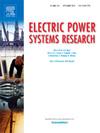Sequential recovery of cyber–physical power systems with distributed generation
IF 3.3
3区 工程技术
Q2 ENGINEERING, ELECTRICAL & ELECTRONIC
引用次数: 0
Abstract
In this paper, a sequential recovery framework is constructed for post-disaster cyber–physical power systems from the viewpoint of the theory of complex networks. Grounded in the power flow analysis pattern of cyber–physical power systems, the framework integrates the recovery sequence, the access of distributed generation, and the cascading failures during restoration. Furthermore, the deep Q-network algorithm is utilized to determine the most effective sequence for repairing malfunctioning parts, thereby maximizing the recovery of the power that was lost. The effects of distributed generation node quantity ratio and permeability on system recovery performance are analyzed on the cyber–physical power system test cases generated grounded in IEEE 30-bus system and IEEE 118-bus system. Meanwhile, the applicability and superiority of the proposed recovery strategy are verified by comparison with alternative strategies.
求助全文
约1分钟内获得全文
求助全文
来源期刊

Electric Power Systems Research
工程技术-工程:电子与电气
CiteScore
7.50
自引率
17.90%
发文量
963
审稿时长
3.8 months
期刊介绍:
Electric Power Systems Research is an international medium for the publication of original papers concerned with the generation, transmission, distribution and utilization of electrical energy. The journal aims at presenting important results of work in this field, whether in the form of applied research, development of new procedures or components, orginal application of existing knowledge or new designapproaches. The scope of Electric Power Systems Research is broad, encompassing all aspects of electric power systems. The following list of topics is not intended to be exhaustive, but rather to indicate topics that fall within the journal purview.
• Generation techniques ranging from advances in conventional electromechanical methods, through nuclear power generation, to renewable energy generation.
• Transmission, spanning the broad area from UHV (ac and dc) to network operation and protection, line routing and design.
• Substation work: equipment design, protection and control systems.
• Distribution techniques, equipment development, and smart grids.
• The utilization area from energy efficiency to distributed load levelling techniques.
• Systems studies including control techniques, planning, optimization methods, stability, security assessment and insulation coordination.
 求助内容:
求助内容: 应助结果提醒方式:
应助结果提醒方式:


